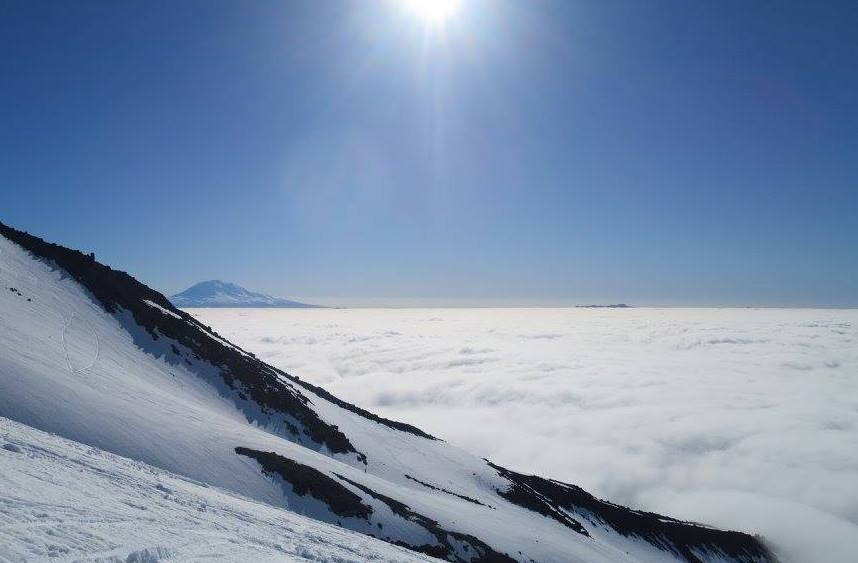
June was an interesting month in the mountains. We had “June-uary” conditions, giving us lots of new snow, rain, and wind. We also had scorchingly high temperatures with places like Leavenworth and Vantage reaching close to 100°F. As we progress through the summer, we need to be mindful of the dangers on these hot, sunny days - even if we are out on snow or a glacier.
The Mountaineers has already reported two instances of heat-related illnesses this season, and we’re not even to the hottest part of the summer yet. Luckily, both instances were caught while still in the “heat exhaustion” stage, and had not yetprogressed to “heat stroke.” In both instances, other team members took the proper steps to assist the ailing person.
Heat exhaustion
If you're out on a hot day, watch out for these signs and symptoms of heat exhaustion:
- Excessive thirst
- Profuse sweating
- Rapid heartbeat
- Pale skin
- Weakness
- Headache
- Loss of consciousness
- Nausea
- Vomiting
- Muscle cramps
- Dizziness
Treatment for heat exhaustion includes:
- Drink plenty of fluids (let thirst be your guide)
- Remove any tight or unnecessary clothing
- Take a cool shower, bath, or sponge bath
- Apply other cooling measures such as fans or ice towels
- Get out of direct sunlight and get into the shade
- Rest and avoid further exertion
Heat Stroke
Heat stroke is the next step after heat exhaustion when the body has had prolonged exposure to high temperatures. It's often accompanied by dehydration and salt depletion. The combination of these factors leads to a shut-down of your body’s ability to control its temperature, which can then lead to severe brain, kidney, and liver damage, and possibly even death.
By technical definition, heat stroke is any time your body temperature goes above 105°F, but here are some other signs that someone has passed beyond heat exhaustion and are in greater danger:
- Throbbing headache
- Dizziness and light-headedness
- Lack of sweating despite the heat
- Red, hot, and dry skin
- Muscle weakness or cramps
- Nausea and vomiting
- Rapid heartbeat, which may be either strong or weak
- Rapid, shallow breathing
- Behavioral changes such as confusion, disorientation, or staggering
- Seizures
- Unconsciousness
If a member of your team is suspected of having heat stroke, he or she should be removed from the heat immediately, and rapid, aggressive cooling should be attempted.
In addition to the steps mentioned above for treatment of heat exhaustion, here are some additional things to do for heat stroke:
- Focus on cooling from the core outwards towards the extremities to help encourage cooler blood flow.
- Use water bottles or bladders as cold packs. Fill with cold water and/or snow, place a sock or other light bit of clothing around them, then apply to the neck, groin, and under the armpits.
- Rapidly evacuate anyone who has an altered level of responsiveness.
Hopefully with these tips in mind you'll be able to stay cool as a cucumber and help prevent anyone in your team from having a heat related illness.
 James Pierson
James Pierson